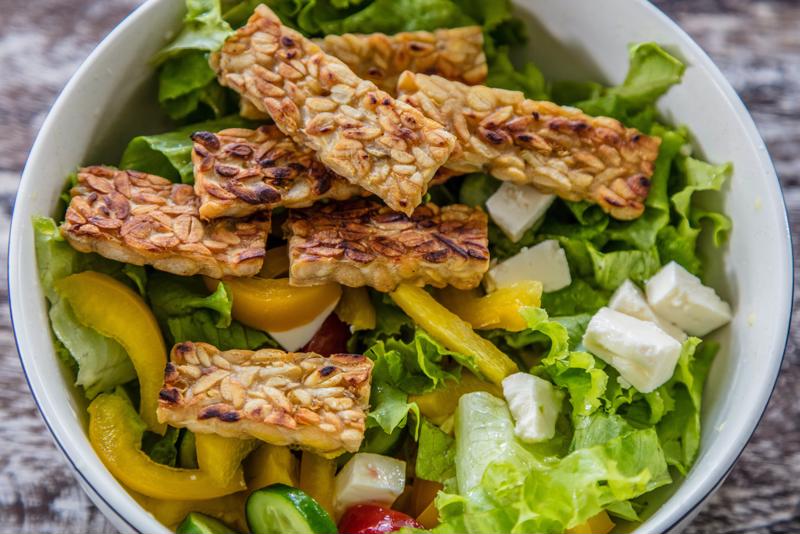Probiotic- and prebiotic-rich foods are all the rage. In fact, they’re a fast-growing, market that’s expected to increase share by $3.5 billion by 2026, according to MarketWatch. Who knew bacteria could be so lucrative?
You don’t have to go far in Austin to find probiotic and prebiotic foods. From the shelves of Whole Foods, to the fridge of your nearest cafe, gut-friendly foods and drinks are everywhere. But are they on your menu? Austin culinary students might do well to learn how to cook with prebiotics and probiotics.
What are prebiotics and probiotics?
We’ll start with probiotics. The average person has several pounds of microbiota living in their digestive tract. Much of that gut flora is good. It aids in the digestion of certain foods, helps with the production of vitamins and even contributes to our immunity. More importantly, good gut bacteria help displace bad gut bacteria. In other words, we want more good bacteria. Probiotics, another name for these beneficial microorganisms, can be consumed in certain foods to help promote digestive health. Some common examples of probiotic-rich foods include fermented items like kimchi, sauerkraut, kombucha, tempeh and pickled vegetables. Yogurt, buttermilk and many aged cheeses are also rich in probiotics.
That brings us to prebiotics. Unlike probiotics, prebiotics are not alive. They’re compounds in certain foods that help probiotics grow and thrive. Think of them as nourishment for good bacteria. Some of the most common prebiotic foods are apples, bananas, leafy greens like kale and spinach, asparagus, garlic, onions, leeks, apples and artichokes. Some experts argue that these foods are just as if not more important than probiotics since they’re so important to good bacteria’s survival. Either way, they’re best when consumed together. They can help prevent and treat diarrhea, reduce the symptoms of certain digestive conditions and even promote good circulatory health.
 Tempeh over salad is a simple but effective way to prepare a probiotic-rich dish.
Tempeh over salad is a simple but effective way to prepare a probiotic-rich dish.Cooking with gut-friendly ingredients
Probiotics are alive, so the logical first question is whether or not heating them up kills them and destroys their nutritional value. And the answer appears to be somewhat inconclusive. According to Care2, several studies have found that heat-killed bacteria still exhibit many of the same or similar health benefits as their live counterparts. Additionally, some bacteria survived after being frozen for 11 weeks.
Still, many of the most probiotic-rich foods can be served at room temperature anyway. Take the example of kimchi. It can be added to grilled cheese, tacos and fried rice after the main ingredients have cooked to help retain as much of the probiotic goodness as possible. Fermented vegetables on a sandwich such as a banh mi are a great way to serve up some probiotics. So is serving them in a leafy salad or potato salad, on top of a burger or over a fillet. Just make sure that you don’t use vinegar when fermenting your ingredients, as it will kill the probiotics. Stick with the traditional salt and water method.
Prebiotics are a slightly different story. Like many healthy foods, the greatest amount of nutritional value comes from eating them raw. However, prebiotics tend to be fibrous and are much hardier than probiotics. Asparagus, onions, cassava and Jerusalem artichokes, for instance, all hold up well to heat, and are fairly easy to work into a wide variety of dishes.
It’s worth noting that some canned versions of probiotic-rich foods such as kimchi and sauerkraut may not even contain probiotics by the time you serve them. Use fresh, refrigerated ingredients when you can to maximize the nutritional value.
The idea of using bacteria as a selling point for certain dishes is an intriguing one, and truly highlights the science behind the culinary arts. Cooking with probiotics and is just one example of many methods covered at our Austin culinary arts campus.


